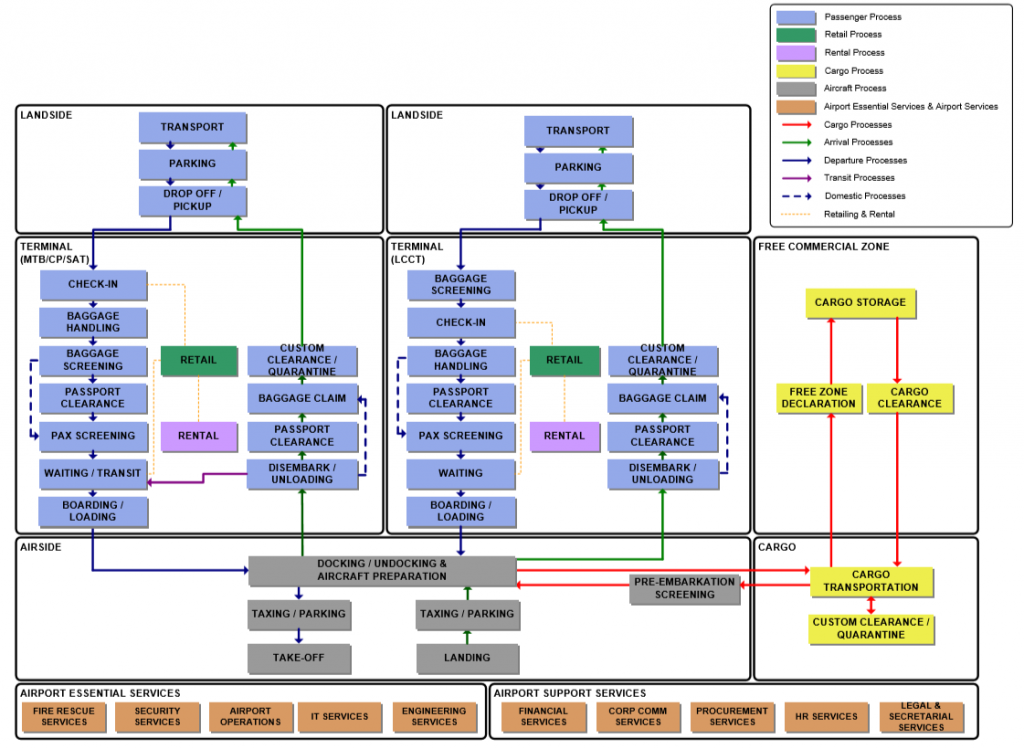COVID-19 in 2020
The current measures – as of the third week of March – that are in place across the world to contain and reduce the effects of the Corona virus COVID-19 place aviation in uncharted waters. The reduction of flights has reached over ninety percent for some States. It is estimated by some that international civil aviation is currently operating at about twenty-five percent of the level that it was this time last year.
In disaster management it is often aviation that helps provide relief. A large cargo aeroplane arriving at the airport closest to an earthquake’s epicentre, or similar, is a stirring sight. This time round, the disaster means that the airport is closed, closing or operating at a level well below optimum. Losing access to an airport means that its function cannot be replicated elsewhere; Airport facilities can substitute for many other things. But nothing can substitute for an airport[1]. The suspension of use of much or all of an airport’s infrastructure and facilities by airlines does not mean that everything can be turned off until it is next needed. On the contrary, a well organised airport will keep its infrastructure and facilities in good working order so that it can be used operationally. This is one of the reasons that airports are racking up costs whilst not generating income at present.
Business Continuity Management
Post-disaster management is often limited to that described in Annex 14; aircraft removal. The plans and procedures that airports have for this activity are not optimised for the long periods of down time that the current situation will result in. Guidance on this topic is limited. The FAA’s Advisory Circular[2] on emergency response includes generic material on post-incident recovery. A recent literature study identified only 23 studies into the managing airports following non-aviation related disruption[3].
ACI does have a guidance document, issued its Airport Business Continuity Management Handbook for the first time in 2019[4]. Business continuity management is intended to allow an airport operator to develop protocols that allow return to normal operations as soon as possible following major disruption.
A number of large airports in the Asia-Pacific have made additional provisions for the recovery from earthquake or flooding. Their protocols are greatly expanded from the relatively simple ones that Annex 14 requires. The start-up time, post incident, is longer too. Tokyo’s Narita Airport plans for a seven day project to re-open the airport after clearing up the effects of a natural disaster[5]. Following extensive flooding in 2018, Kansai Airport in Japan also created a detailed business continuity plan.
Kuala Lumpur Airport has also a well-developed plan. It contains, as a starting point, a detailed inventory of what the airport’s processes[6] are.
Plans that all airports should have for business continuity consists of a number of elements, including:
- A business impact analysis and risk registers;
- Critical resources inventories;
- Return to service checks & inspections, and
- A command structure for the recovery.
Not only are plans required, but staff members need to be trained in their use and testing. As per the principles of A-CDM, the airport needs its aviation and business stakeholders to be involved in the recovery processes.
And if you don’t have a plan…
For airports without such contingency planning, the road to recovery will most likely be longer than for those with a plan. For those airports without, the development, training, testing and implementation of such a plan is unlikely to be achievable now that normal operations are already winding down.
[1] W White quoted in Memphis airport as a model for disaster response, J Fielding Smith, S.Waggoner & G Hall, in Crisis Response Journal, 2007
[2] FAA AC 150/5200-31
[3] Managing airports in non-aviation related disasters: A systematic literature review, A Polater in International Journal of Disaster Risk Reduction, 2018
[4] The document is a follow-up to a ACI Best Practices paper first issued in 2012
[5] Emergency Planning and Crisis Management for the Airport Business, H Kanaya, 2012
[6] Diagram courtesy of Malaysia Airports, via ACI
About To70. To70 is one of the world’s leading aviation consultancies, founded in the Netherlands with offices in Europe, Australia, Asia, and Latin America. To70 believes that society’s growing demand for transport and mobility can be met in a safe, efficient, environmentally friendly and economically viable manner. To achieve this, policy and business decisions have to be based on objective information. With our diverse team of specialists and generalists to70 provides pragmatic solutions and expert advice, based on high-quality data-driven analyses. For more information, please refer to www.to70.com.


